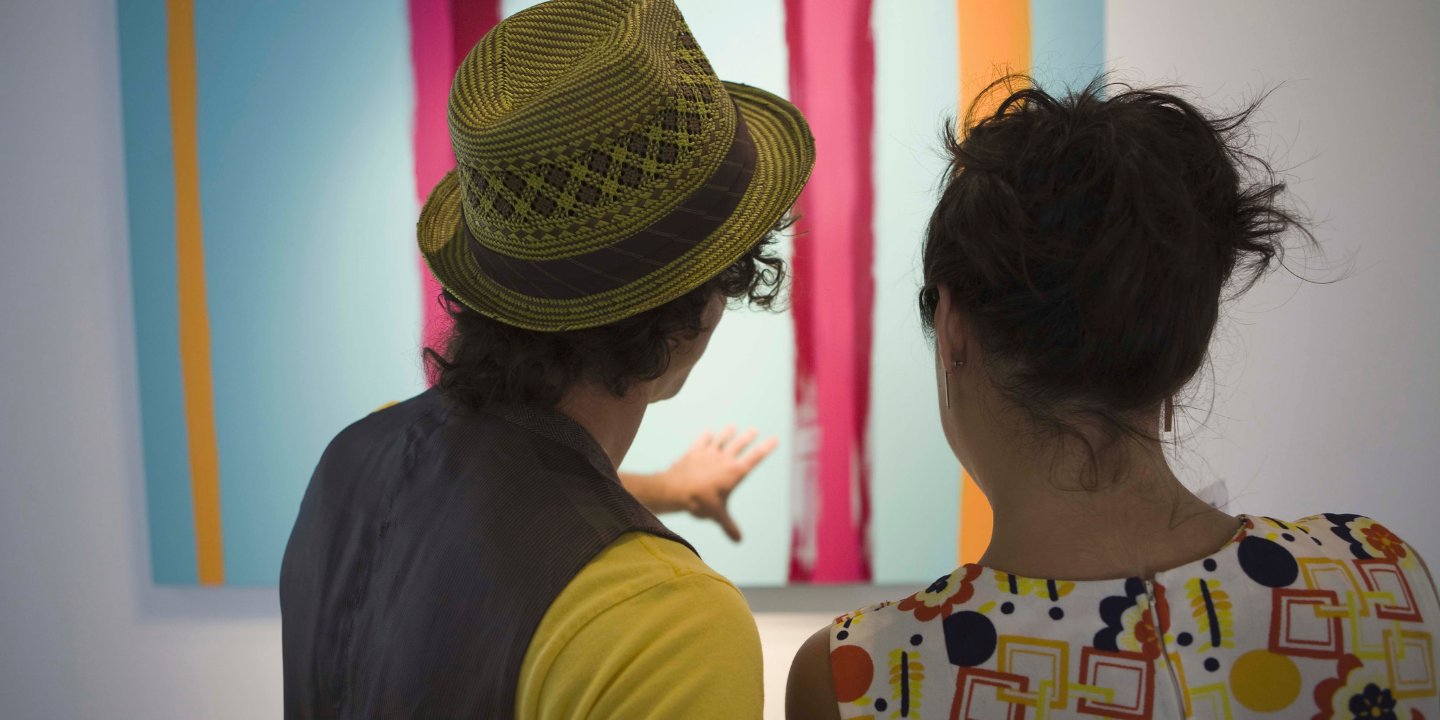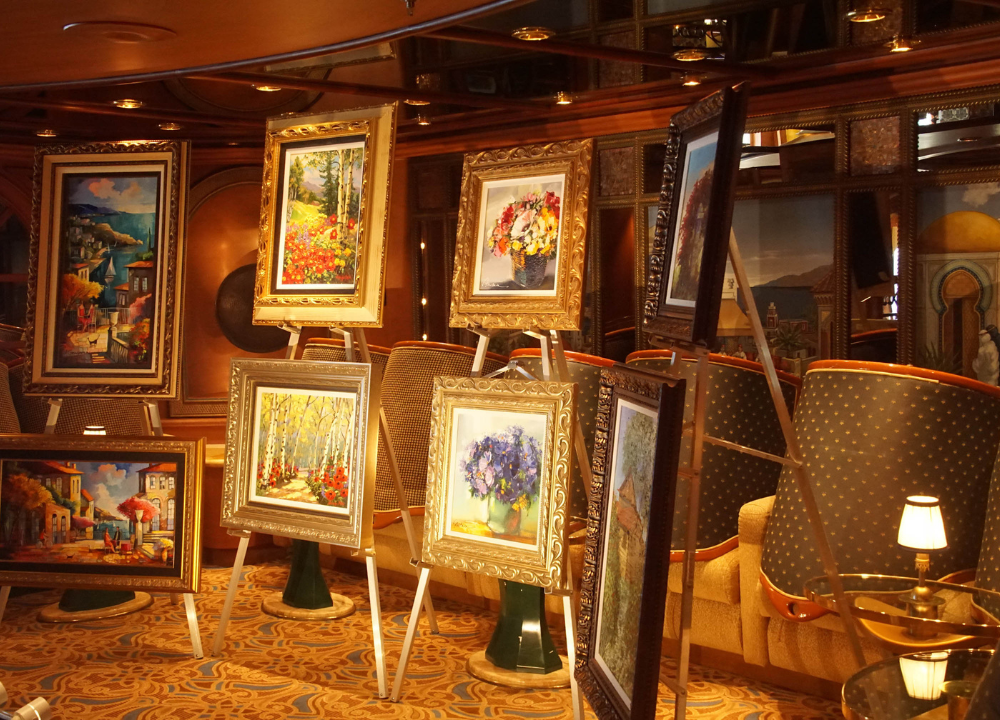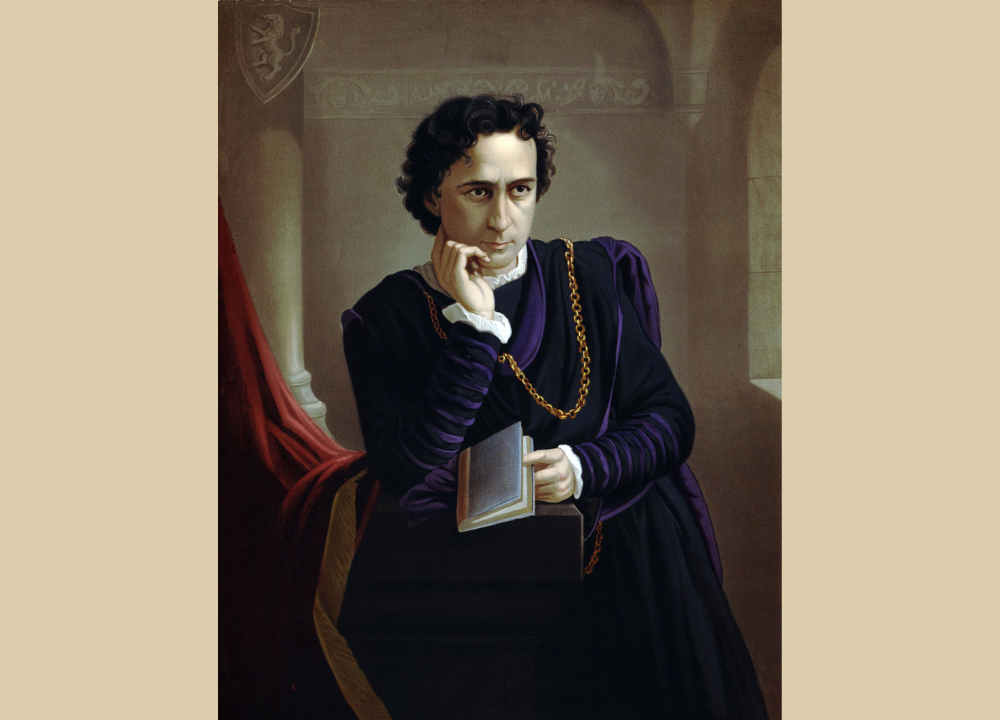Welcome to the world of artistic expression where every detail counts, even the labels that accompany the masterpieces. Crafting art gallery labels is both an art and a science; it requires precision, creativity, and insight into the minds of the artists and their audience. In this bespoke guide, we will navigate through the meticulous process of creating labels that not only inform but also engage, enthrall, and even evoke emotion. Let’s embark on this journey to adorning gallery walls with narratives that compliment the visual stories being told.
Understanding the Importance of Art Gallery Labels
Welcome to the world where tiny placards wield great power. Art gallery labels do more than meet the eye; they are the silent narrators that enrich the viewer’s experience, weaving stories and facts into the visual feast. These labels serve as guides, enticing visitors to dive deeper into the artwork, bridging the gap between mere viewing and understanding. They strike a delicate balance, delivering just enough information to stimulate curiosity while preserving the aesthetic harmony of the exhibit. Through thoughtful labels, we open up a dialogue between the artist, the art, and the audience, elevating the gallery experience to new heights.
The Role of Labels in Visitor Education and Engagement
Ever wonder what makes an art exhibit truly memorable? It’s those little placards positioned next to each piece – the art gallery labels. These labels bridge the gap between artists and visitors, transforming a simple visit into an educational adventure. They don’t just dish out the basics like the name of the artist or the title of the work; they are the secret sauce to sparking conversation and curiosity.
Good labels engage visitors by offering fascinating nuggets of information that may not be immediately obvious. They tell a story, pose questions, and invite contemplation. With their help, every observer becomes a student, absorbing interesting facts and insights as they move from one piece to another. They demystify complex concepts and make the entire gallery experience inclusive, stimulating, and, above all, unforgettable.
Balancing Informational Content with Aesthetic Appeal
When visitors roam the quiet corridors of an art gallery, they are greeted by more than just the art; they encounter little snippets of text that serve as guides, revealing the hidden whispers of each masterpiece. Crafting these labels is a delicate task—it’s where the story of the piece and its physical presentation intersect. Too much text may overwhelm viewers, while too little may leave them craving more insight.
The name of the game is harmony. An engaging label strikes the perfect chord between being informative without detracting from the artwork’s own voice. It sets the scene with selective facts and leaves enough room for personal interpretation. The label’s design plays a concerto along with the visual elements, featuring fonts and colors that support the artwork, not argue with it. By focusing on this balance, we achieve an immersive atmosphere where every label adds depth to the beauty hanging on the wall, complementing the art instead of clashing with it.

Enabling Accessibility Through Effective Labelling
Ease of access is critical in an art gallery. Labels act as a bridge, ensuring that everyone, no matter their background, can connect with the art on display. Effective labelling becomes a form of inclusion, providing insights to all visitors, including those with disabilities.
To make this happen, consider Braille labels for the visually impaired and audio descriptions that can be accessed through smartphones. The use of simple language and large print caters to a broader audience, offering an enjoyable experience to both young audiences and those for whom English might not be their first language. It’s all about crafting a welcoming space where art truly is for everyone.
Getting Started: Laying the Foundations
Before diving into crafting those enchanting narratives for gallery walls, it’s essential to lay a solid foundation. This groundwork involves understanding the purpose each label will serve, researching the stories behind the artworks and the artists, and choosing the materials that will frame your words. It’s like preparing a canvas before painting; you need to set things up so your artistic details will stand out. Let’s begin shaping the building blocks for labels that will captivate and inform.
Defining the Purpose of Your Label
Before diving into the design and content of your label, it’s crucial to pinpoint why you’re creating it. Each label should aim to achieve a specific goal. Is it to provide a brief biography of the artist? Maybe it’s there to offer insights into the historical context or the techniques used? Or perhaps it’s meant to spark curiosity and guide the viewer to see the piece in a new light?
When you grasp the label’s purpose, it shapes everything from the words you choose to how the information is presented. Remember, a solid understanding of your label’s end goal is like having a roadmap. It helps you navigate your way to creating an informative and engaging little sign that both complements the artwork and enriches the viewer’s experience. Keep it focused and intentional, and your label will serve its role perfectly.
Researching the Artworks and Artists
Before you can dive into creating eye-catching labels, you need a deep understanding of the pieces and the minds behind them. It’s like becoming a detective in the art world, where your mission is to unearth the story of each artwork. Begin by studying the period it was created in and the life of the artist. Look into the historical context, techniques used, and the materials that brought the piece to life.
Uncovering these facts can be captivating. Imagine learning about the artist’s inspiration or the cultural significance of the time. These gems of knowledge will shape how you craft your labels, giving visitors a glimpse into the soul of the artwork. That’s why you should always take the time to research thoroughly – it not only educates the audience but also pays homage to the artist’s legacy.
Choosing the Right Materials and Fonts
When considering the foundational aspects of label creation, the choice of materials and fonts plays a crucial role in the overall impact. To begin with, the material for your labels should not only complement the artworks but also withstand the test of time. This could mean opting for high-quality paper that resists fading or going for modern materials like acrylic which offer durability and a sleek look.
Selecting the perfect font is like choosing the right voice for your story. Stick with fonts that are easy to read from a distance and avoid those fancy, complicated ones that can confuse visitors. Remember, the goal is clarity and elegance. Sans-serif fonts such as Helvetica or Ariel often are the go-to choice, as their clean lines enhance legibility and maintain a professional appearance.
Design Elements of an Effective Gallery Label
Designing an engaging label for an art gallery is like setting the stage for an intriguing play. It’s all about creating a visual invitation that guides the audience’s eyes to the story behind the canvas. A successful label not only provides essential information in a glance but also enhances the art it accompanies without stealing the spotlight. As we delve into the design essentials, let’s explore the subtle art of blending form with function to create labels that are clear, complementary, and captivating.
Optimal size and layout considerations
When planning your gallery’s tags, think about the perfect size: they should be big enough to be read comfortably from a short distance but not so big that they distract from the artwork itself. Generally, aim for a sweet spot where visitors can scope them out without squinting, but the art remains the star of the show.
Layout plays a huge role, too. It’s all about clarity and flow. Arrange the information in a way that guides the viewer naturally through the title, artist, and further details. Using bullet points or separate paragraphs for different types of info helps to break things up neatly. Remember, a crisp layout coupled with just-right sizing makes for a label that is both informative and inviting.
Colour Schemes that Complement Without Overshadowing
When you’re choosing colors for your exhibit descriptions, think like a great supporting actor—stand out enough to be noticed, but don’t steal the show. The perfect palette will highlight the art, not distract from it. With a dash of color psychology, select hues that resonate with the artwork’s vibe. For instance, earth tones can harmonize with landscapes, while monochromatic schemes work wonders with modern art. However, make sure the colors you pick aren’t too loud. You want to invite visitors into the artwork’s story, not send them off on a wild goose chase of flashy tones.
Use bold for key details like the artist’s name or the artwork’s title to guide the eye smoothly. Utilizing whitespace is like giving art its personal bubble; it prevents visual crowding. Remember, it’s all about that exquisite balance that allows the text to speak with elegance and lets the art shine in its full glory.
Utilizing Whitespace to Enhance Readability
Whitespace, often referred to as negative space, is a critical design element that impacts the readability and overall aesthetic of your labels. Whitespace is not just empty space; think of it as the element that helps the content breathe. It frames the text, giving each word the spotlight so that it can be fully appreciated by the viewer. Too little space can make the label appear cramped, deterring visitors from reading, while a harmonious balance can draw them in.
Make sure your labels are designed with plenty of space around the text. This not only makes them look cleaner but also emphasizes the important information. Strategically implementing whitespace within the text can guide the viewer’s eye naturally down the list of details, ensuring they ingest every morsel of enlightenment offered. With thoughtful spacing, the viewer’s experience can shift from skimming over words to truly engaging with the narrative behind the artwork.
Content is Key: Writing the Label Text
Strolling through an art gallery, visitors often find their eyes drawn to the small, yet significant placards resting beside each piece of artwork. These are the storytellers in miniature, the silent narrators that unlock the secrets of the canvas or sculpture. Crafting this narrative is a delicate task, where each word is carefully chosen to illuminate the viewer’s experience without overwhelming the art itself. As with the brushstrokes of a painting, the creation of this text is where precision meets passion, and it’s crucial for capturing the essence of the piece and the mind behind it.
Developing Clear and Concise Descriptions
When it comes to describing masterpieces on display, clarity is paramount. A well-crafted label offers just enough insight to spark interest without overwhelming the reader. Use straightforward language to ensure that visitors of all ages and backgrounds can appreciate the artwork’s story. It’s not about dumbing down; it’s about opening up the world of art to everyone.
But brevity is also a friend. Aim for descriptions that can be read and understood in under 30 seconds. This means cutting out any fluff and focusing solely on what matters. Here’s the tough part — deciding what to include. Mention the artist’s name, the work’s title, perhaps the year it was created, and a snippet about the art’s significance or the artist’s intent. Engage your audience with a compelling fact or question, and watch as the art starts conversing with them.
Incorporating Storytelling in Label Writing
Have you ever read a label next to an artwork and felt instantly drawn into its world? That’s the magic of storytelling in label writing. Stories captivate us, offering a gateway into the artist’s vision and the deeper meaning of their work. When crafting a label, think of it as a mini-story, a narrative snippet that guides your audience through the artwork’s journey.
By weaving together the artist’s background, the historical context, or the symbolism within the piece, a label can transport viewers to the moment of the artwork’s creation. It’s not just about the facts; it’s about evoking the emotion and passion behind the work. Crafting a story that resonates can make the difference between someone simply looking at a piece and truly experiencing it. So, pick your words carefully to breathe life into the canvases and sculptures, turning a walk through the gallery into an unforgettable adventure.
Technicalities: the art of including date, medium, and dimensions
When it comes to the finer details, precision is key. Dates provide a historical context, helping viewers understand when the artwork was created and how it fits into the artist’s career. Use a consistent format, whether it’s day-month-year or month-day-year, so it is easy for everyone to understand.
The medium tells the story of what materials the artist used. This can range from oil paints to digital media, and knowing this helps the audience appreciate the skill and technique involved. Mentioning the dimensions gives a sense of scale and can surprise viewers who haven’t seen the artwork up close. Remember, always use units that are common to your audience (like inches or centimeters), and be as precise as possible without cluttering the label.

Logistical Considerations
Before your eye-catching labels reach the gallery walls, there’s a whole behind-the-scenes effort to consider. This stage is about the practical moves that ensure each label is easily seen, safe from harm, and flexible enough to evolve with the artworks they describe. Here, attention to the nuts and bolts of mounting, visibility, and maintenance will reflect the professionalism of your presentation and the overall visitor experience.
Mounting and Placement for Optimal Viewing
When you’re setting up those important little plaques, the mounting and placement of your labels is super key. You want to make sure everyone can see them without having to squint or bend over backward. Think about putting them at eye level, which usually means somewhere around 60 inches from the ground. And if kids are part of your audience, a few lower ones wouldn’t hurt.
It’s not just about height though. Consider the flow of the room and how folks move through the space. Your labels should be easy to spot as someone approaches the artwork – close enough to relate, but not so close they block the view of the art itself. Angle and lighting are also big deals. You don’t want your visitors playing dodge-the-glare instead of appreciating the art and reading about it!
Adjustments for Security and Conservation
When it comes to preserving and safeguarding the art, small details like the labels can play a big role. Security is pivotal in an art space, not only for protecting valuable pieces but also for maintaining the integrity of the information provided to visitors. Thoughtful label design includes ensuring they can’t easily be tampered with or damaged. Choosing sturdy materials and secure mounting options is crucial to prevent theft or vandalism.
Conservation efforts extend to maintaining a stable environment for the art. Labels should be made of materials that don’t emit harmful chemicals or react adversely with the artwork. Also, consider the light sensitivity of different inks and paper types to prevent fading over time. Properly mounted labels should be placed at a safe distance from artworks to avoid any potential physical contact. By marrying these two elements, security and conservation, labels not only inform but also protect – quietly standing guard over the gallery’s treasures.
Thinking about label maintenance and updates
Creating the perfect label for an art exhibition is just the beginning. Once they’re up and beautifying the walls, it’s crucial to think about keeping them in top shape. Dust, curious fingers, and time can wear down even the sturdiest of labels. Maintenance is key! Regular cleaning, using gentle materials that won’t harm the print or surface, ensures that your labels stay as crisp and clear as the day they were mounted.
But what about when the information changes or an artwork finds a new home? That’s when updates come into play. Be prepared by having a system in place for swiftly updating the labels with minimal interruption to the display. Whether it’s correcting an error or adjusting details, keeping your labels current is as important as their initial creation. This not only shows respect for the art but also for the audience, providing them with accurate and up-to-date information.
Leveraging Technology
Welcome to the cutting edge of creativity, where technology meets tradition in the realm of art display! In a modern twist to the classic art scene, technological advancements are revolutionizing how we interact with artworks. As we embrace this digital renaissance, interactive elements are elevating the humble gallery label to an experience that’s both informative and immersive. Let’s explore how these tech-savvy tools can transform our appreciation and understanding of art in extraordinary ways.
Interactive Labels with QR Codes
Imagine walking through an art gallery and coming across a painting that captivates you. You’re curious to learn more, and right on cue, there’s a label with a little square code. Welcome to the age of interactive labels. These nifty tools mix tradition with tech, providing a gateway to a deeper dive into the artwork’s story.
By simply scanning the QR code with a smartphone, visitors can unlock a treasure trove of information. Videos, artist interviews, detailed analyses, and even audio guides come alive in the palm of your hand. It’s like having a personal tour guide without the chatter. QR codes on labels ensure visitors get the most out of their experience, while galleries keep the walls clutter-free and focused on the art. It’s a win-win for everyone.
Augmented Reality: A New Frontier for Labels
Augmented reality (AR) is changing the game for art galleries around the world. Imagine pointing your smartphone at an ordinary label and suddenly it’s alive with videos, sounds, or even 3D models that dive deeper into the story behind the artwork. This isn’t just cool tech – it’s a whole new way to experience art.
With AR, visitors can immerse themselves in the life of the artist, understand the techniques used, or explore the historical context without overcrowding the gallery with text. Customizing your own adventure becomes possible, as different paths of exploration open up through a simple scan. AR is more than just a label; it’s a portal to a richer, more interactive learning experience that can capture the imagination and hold onto it.
Multimedia Labels for a Multi-Sensory Experience
Imagine walking into an art exhibit where the paintings talk to you, or the sculptures guide you through their creation story. This isn’t a fantasy; it’s the power of multimedia labels bringing a multi-sensory experience to visitors. These innovative labels combine audio, video, and even tactile elements to provide a deeper understanding and appreciation of the art on display.
Using screens next to artworks, visitors can watch interviews with the artist, see the creative process, or view animations that breathe life into still images. Headphones might hang nearby, offering curated soundscapes or narration that complements the visual feast. Some multimedia labels include braille or textural elements for a tactile dimension, making the experience more inclusive for all guests. This convergence of technology and tradition invites an interactive journey—transforming passive observers into active participants.
Dotting the I’s and Crossing the T’s: Final Steps
You’ve made it to the final stage of curating those thought-provoking placards that accompany masterpieces. This is where your attention to detail truly shines as you polish and perfect each label. It’s a meticulous process, where proofreading, feedback, and the subtle art of installation come together to ensure that every label is a reflection of excellence. Here, we’ll delve into these crucial final steps that elevate your craft from good to gallery-worthy.
Proofreading: the critical final step
Before your labels take their place beside the artworks, it’s crucial to scrutinize every word, letter, and punctuation mark. Proofreading isn’t just about catching typos; it’s an art of ensuring the message is communicated effectively and aligned with the gallery’s tone. Meticulous attention to detail during this phase prevents distracting errors that can detract from the viewer’s experience.
Gather trusted colleagues or friends who can offer fresh eyes and new perspectives on the text. It’s not uncommon for us to miss our own mistakes after looking at the same text repeatedly. Having multiple reviewers also increases the chance of catching potentially embarrassing blunders that could otherwise undermine the professionalism of your exhibit.
Gathering Feedback Before Printing
Before you commit to printing, it’s super important to know what others think about your labels. Why? Because fresh eyes can spot things you might have missed. Make sure to get a variety of perspectives, from art experts to casual gallery visitors. This step is all about refining your message and making sure your labels are the best they can be.
Listen carefully to the feedback. Maybe someone will suggest a clearer way to describe the artwork. Or perhaps they’ll point out that the font size you chose is a little tough to read from a distance. Use this feedback to tweak your labels. And remember, the goal is to create an experience where the label complements the artwork flawlessly.
Installation Nuances and the Finishing Touches
Once you’ve got your labels polished and printed, it’s time to think about how they’re going to live in the gallery space. Placement is everything. You want your labels to be the silent guides that catch the eye without demanding attention away from the artwork. Typically, they’re installed at eye level, so visitors don’t need to crouch or stand on tiptoes to read them. About a hand’s width from the artwork is standard, maintaining a respectful distance.
Then, there’s the matter of seamlessness. The transition from art to label should feel effortless, like a smooth conversation. Employ an installation method that doesn’t detract from the piece or disrupt the gallery walls more than necessary. Many galleries use simple adhesives or discreetly small nails for this. And remember, your labels will need some love over time—whether it’s a light dusting or an update when a piece moves on to a new home, make sure there’s a straightforward process for maintaining them.
Conclusion
As the tour concludes, our freshly minted knowledge on how to make labels for an art gallery sets us apart as connoisseurs of exhibition craftsmanship. These tiny placards serve as silent docents, eloquently narrating whispers of creativity and context that transform a viewer’s stroll into a thematic voyage. Embody the learned tips and sip the essence of your art with carefully curated words and designs. An operator of elegance and an illuminator of minds, your gallery labels await to grace the art space with their presence, fortifying the bond between the art, its creator, and its admirers.





